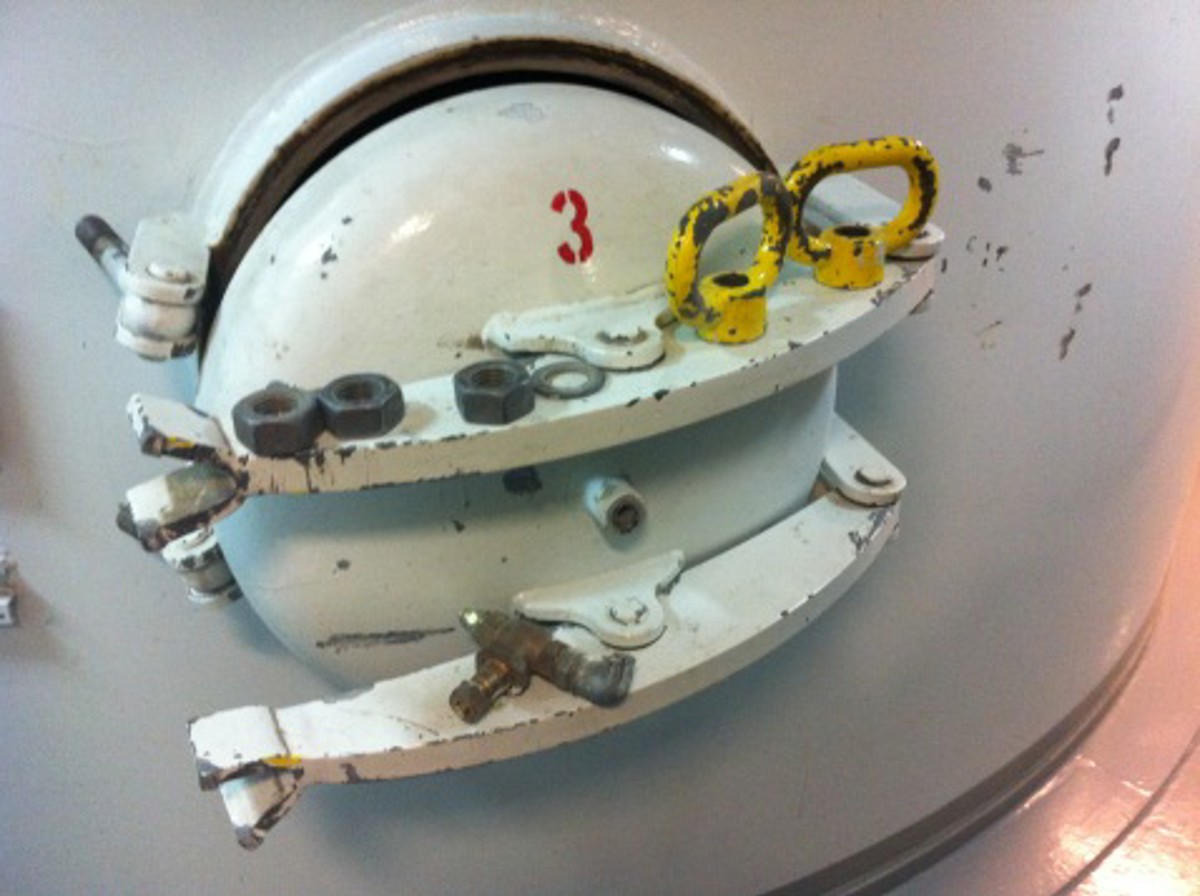Near-miss: Cement tank hatch failure
- Safety Flash
- Published on 4 September 2012
- Generated on 3 July 2025
- IMCA SF 09/12
- 2 minute read
Jump to:
A Member has reported an incident in which the hatch on a cement tank failed under pressure.
What happened?
The incident occurred when the cement tank was being pressurised to verify the integrity of the system prior to loading dry bulk during a forthcoming port call. Following the pressurisation of the cement tank to approximately 4 bar, a loud bang was heard and the cement tank pressure was rapidly lost.
Fortunately, no one was present within the cement room at the time and there were no injuries. This incident was considered a high potential near miss. Had any persons been in the cement space at the time of the incident, the potential for a serious injury was high.
Our Member’s investigation revealed the following:
- The original cement tank hatch securing dogs had been removed and replaced by nuts. When this replacement had taken place was not known.
- It was discovered that the most likely reason for the change of the securing dogs with nuts was to provide greater clearance for personnel access between the cement tank hatch and the pillar.
- Although the cement tank hatch thread bar was 27mm, the diameter of the nuts was 30mm and, although of a differing size, it was still possible to secure these 30mm nuts on the 27mm thread bar.
- The change had not been properly documented or dealt with through a ‘management of change’ process.
Our Member reported that a thorough investigation of this high potential incident is currently being undertaken and that the detailed findings from this investigation will be revealed in due course.
IMCA Safety Flashes summarise key safety matters and incidents, allowing lessons to be more easily learnt for the benefit of the entire offshore industry.
The effectiveness of the IMCA Safety Flash system depends on the industry sharing information and so avoiding repeat incidents. Incidents are classified according to IOGP's Life Saving Rules.
All information is anonymised or sanitised, as appropriate, and warnings for graphic content included where possible.
IMCA makes every effort to ensure both the accuracy and reliability of the information shared, but is not be liable for any guidance and/or recommendation and/or statement herein contained.
The information contained in this document does not fulfil or replace any individual's or Member's legal, regulatory or other duties or obligations in respect of their operations. Individuals and Members remain solely responsible for the safe, lawful and proper conduct of their operations.
Share your safety incidents with IMCA online. Sign-up to receive Safety Flashes straight to your email.


